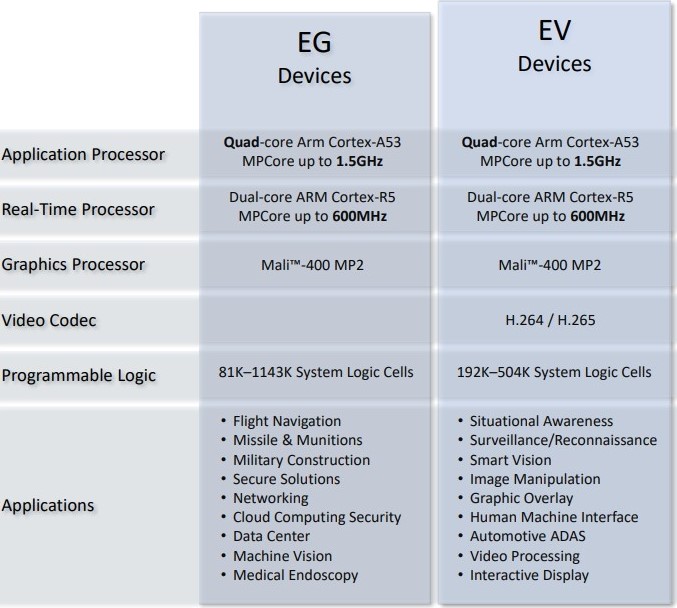What Is the Difference Between UltraScale+ EG and EV?
Last year, we unveiled our Genesys ZU UltraScale + MPSoC, playfully dubbed our “kitchen sink board” because it has everything (except for a kitchen sink, of course). But, for an embedded engineer that’s developing a multimedia or networking application – to name a few – it likely has the peripheral to check your boxes. DisplayPort, Ethernet, DDR4 memory, USB, USB-C, etc.
The Genesys ZU also contains Digilent Pmod and high-speed SYZYGY-compatible Zmod ports to allow for flexible expansion and access to high speed, high bandwidth I/O for software defined radio, ultrasound, and a wide variety of other user-defined data acquisition or signal processing systems. At the center of it all is Xilinx’s UltraScale+ technology. In the case of the initial launch of the board, it was the 3EG variant. Now, however, we have also released the 5EV variant to provide an upgrade to those that are looking for even more.
According to Xilinx’s website, the difference between Zynq UltraScale+ 3EG and 5EV:

Why You’d Need a Genesys ZU-5EV
Alongside increased memory and FPGA fabric, the Genesys ZU-5EV gives its users an extra “oomph”, particularly if they are working with high-definition video/embedded vision applications like automotive ADAS, surveillance, movement analysis, and object detection. The board has nearly double the logic cells (256k) and over three times the DSP slices (1,248) of the 3EG, but the 5EV gains the most from its improved multimedia and network connectivity. On the Genesys ZU 5EV, SFP+ 10G ethernet is included (compared to 1G). Users will also have access to HDMI ports (a source and a sink) and H.265 video codec for multimedia applications.

If you’d like to learn more about the new Genesys ZU-5EV UltraScale+ MPSoC development board, you can visit the product page HERE and read the documentation HERE.


Just confirming – if all you want is a fast ADC / DAC, these boards are unsuitable. Right?
These boards are SoC/FPGA boards mainly. Incidentally, there is a low-speed ADC (XADC) integrated into the SoC. So if all you want is fast ADC/DAC, you are in the wrong section. If, however, you need an FPGA board that can interface to a fast ADC/DAC, that is an excellent application. The FMC and Zmod (SYZYGY) expansion connectors are there for ADC/DAC add-on boards and support various data interfaces.
You can purchase an ADC development board like those coming from ADI and TI for a good price (300-400usd), or a commercial ADC/DAC FMC board. They are pretty expensive sometimes, but data rates and resolution worth it.
You mean that EG versions are unsuitable for image processing ?
Not necessarily, the 5EV are just much better.